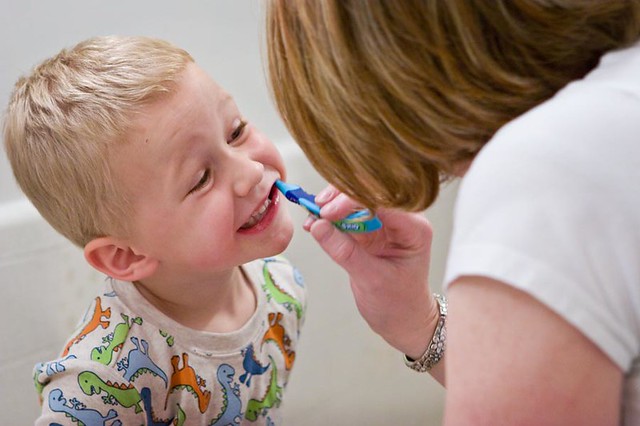An interesting article titled “Pediatric Dental Anesthesia: An Avoidable Tragedy,” written by Lee et al. appears in the December 2017 edition of Pediatrics (vol. 140, no. 6). In the article the authors present a case of a dental death after anesthesia for early childhood caries and have experts provide commentary.
Pediatric dental deaths have been reported in the news over the years with all too much frequency. See the dental deaths page for numerous cases and the original source of the information regarding the case.
In the article by Lee the authors say how young children with early childhood caries or cavities are often treated using moderate sedation or general anesthesia. It is estimated that up to 250,000 pediatric sedations for dental treatment occur in the U.S. each year. In these sedations the children are often given benzodiazepines, opioids, nitrous oxide, and local anesthesia. The authors state
“All are associated with serious adverse events, including hypoxemia, respiratory depression, airway obstruction, and death. There is no mandated reporting of adverse events or deaths, so we don’t know how often these occur, the factors associated with adverse events, or best practices to prevent such events.”
The case reported in the article by Lee is of a 4 year old boy with early childhood caries who went to a dental office for treatment. The dentist often treats young children with severe caries and is licensed to provide moderate sedation. This dentist is not the same as the child’s normal family dentist but due to the child’s uncooperative behavior the regular family dentist could not provide the treatment as he or she was not comfortable providing sedation to children. During the child’s treatment the dentist has an assistant to provide sedation and monitor the child. The child is given midazolam and nitrous oxide. After the treatment the child is left in a waiting room while the dentist talks with the child’s mother. When the dentist and mother return to see the child he is cyanotic and has no noticeable breathing. The dental staff begins cardiopulmonary resuscitation while they wait for paramedics to arrive. However, the child is pronounced dead when arriving to the hospital.

In some of the experts commentary it is pointed out that aggressive surgical treatment with sedation or general anesthesia has been performed largely due to overstating the association between tooth decay in primary teeth and subsequent decay in permanent teeth. Studies have shown that such a connection has a relative risk ratio ranging from 1.4 to 2.6. These commentators also point out that it is possible to treat diseased teeth with 38% silver diamine fluoride which arrests active caries and is safe. Such treatments can be performed at 6 month intervals and is covered by an increasing number of insurers. There is concern that these treatments can darken the teeth but the application of silver diamine fluoride can be followed by topical potassium iodide to reduce the dark color and then covered with filling material without requiring any local anesthesia. These commentators state
“The care approach that resulted in the death of this young boy is outdated and inequitable. ..Treating tooth decay as illustrated in this case presentation, whether in outpatient practices or in hospital settings and influenced by the availability of public and private insurance coverage, is unethical and wasteful.”
Additional expert commentary points out the fact that someone who is not an anesthesiologist often provides the anesthesia in cases of dental sedation and seems to question the physiologic monitoring that is being performed. This expert also says how procedures performed on adults at physician offices have been associated with up to a 10 times increased death rate when compared with ambulatory surgery centers and speculates that outcomes are not any better for children. The expert also criticizes the dental profession for not having national quality improvement databases that include information about deaths as well as sentinel events, such as laryngospasm, hypoxemia, and airway obstruction. Such a database could lead to identifying system level deficiencies and contribute to improved surgical outcomes.
Further expert commentary points out how early childhood caries is more common in low income individuals in the U.S. They point out the reality that low-income parents may also have limited food budgets that make cheap, sweetened beverages and sugary food convenient. Therefore numerous ideas have been set forth that can be implemented to help avoid future pediatric dental deaths.

1 thought on “Is Pediatric Dental Death Avoidable?”